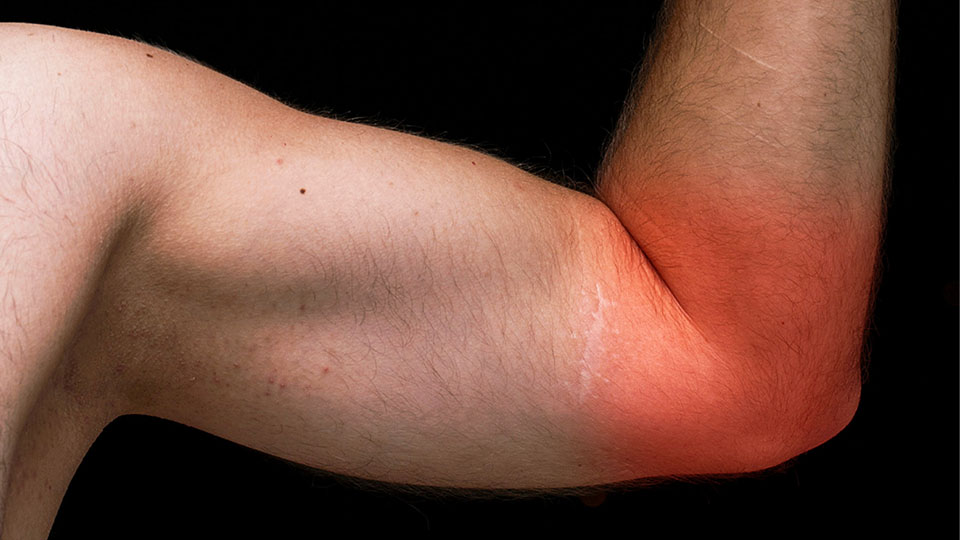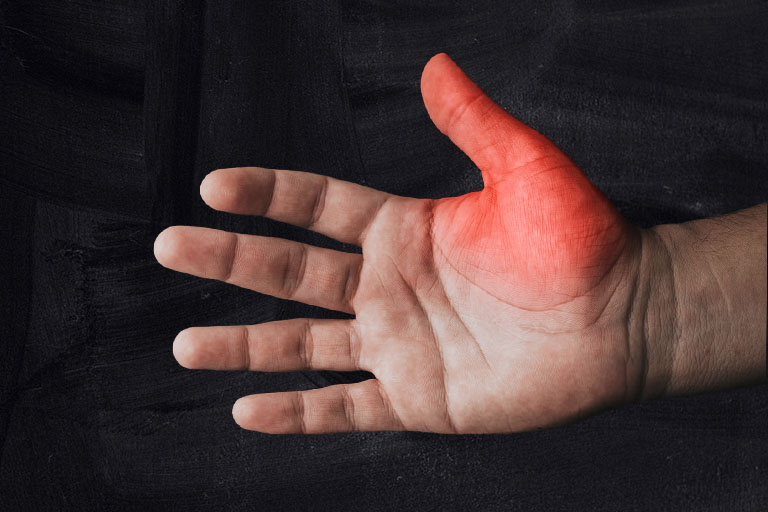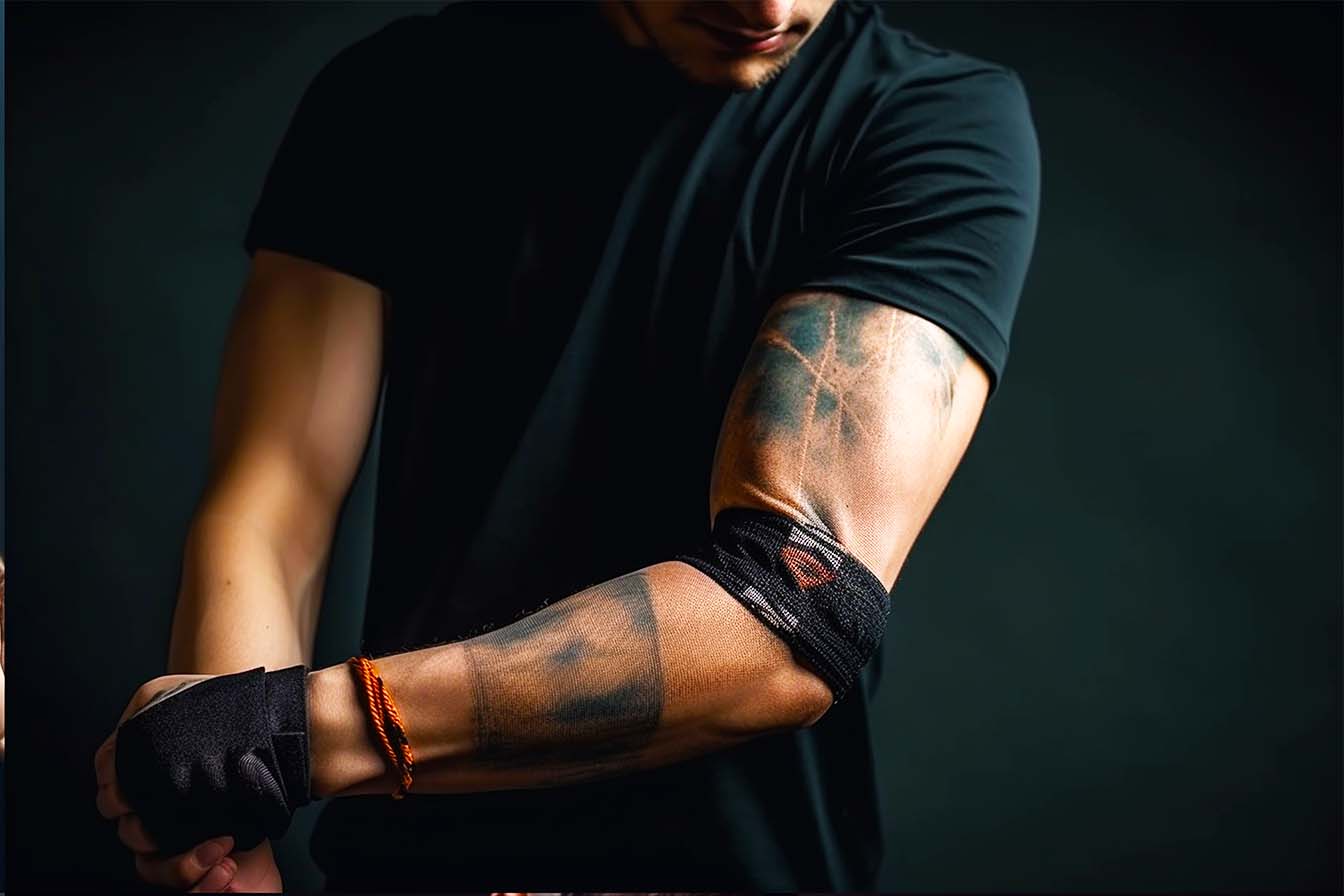What is Gamer’s Elbow
As a Physiotherapist, I understand how frustrating it can be to experience pain and discomfort in the elbow while gaming. Gamer’s Elbow also known as Mouse Elbow is a condition that occurs in the extensor tendons of your forearm. The condition makes it hard to enjoy gaming because of the pain and discomfort that follows.
In this article, I will explain the anatomy of your elbow so you better understand the condition. I also talk about what symptoms you should watch out for to recognise the early warning signs. Alongside this, you get valuable tips on how to prevent and recover from Gamer’s Elbow.

ANATOMY OF YOUR ELBOW
Your elbow joint allows you to bend and straighten your arm as well as rotate your forearm. The joint is important and involved in many mouse movements. The elbow joint is made up of three bones: humerus, which is the upper arm bone, and ulna and radius, which are the two bones in the forearm. The muscles and tendons surrounding the elbow joint are responsible for the movements. Five ligaments are supporting the joint with stability.
WHY YOU GET GAMER’S ELBOW
Gamer’s Elbow can develop when the tendons on the inside of your elbow become inflamed. The tendons that attach the muscles to your bones, are prone to inflammation and damage when you perform a lot of repetitive movements. This happens when you play for many hours moving your mouse around the mousepad. Having a tight grip on your mouse or a poor hand position can add further stress to the elbow tendons.
Another common reason why people develop Gamer’s Elbow is an imbalance in muscle contraction around the joint. This is affecting the extensor muscles involved in bending and straightening your wrist and elbow.
SIGNS AND SYMPTOMS OF GAMER’S ELBOW
By recognising the early warning signs, you can take action before the symptoms worsen and develop into a real injury. Always seek professional help if you have severe symptoms.
If you’re experiencing any of the symptoms below, it’s important to give your elbow rest and seek out a possible solution. Ignoring the symptoms can lead to further complications and potentially long-term damage.
Signs and symptoms
- You may feel pain and tenderness on the inside of the elbow when bending or straightening your arm
- You may feel pain and weakness when squeezing your hand
- Your elbow may appear swollen, red, or feel warm to the touch
- You may feel numbness or tingling in your fingers.
PREVENTION AND TREATMENT OF GAMER’S ELBOW
The best way to prevent Gamer’s Elbow is to take frequent breaks from gaming to give your elbow time to rest and recover. Training the muscles of your arm and hand regularly will provide support and increase the capacity of how much your elbow can tolerate. Using ergonomic equipment and proper hand posture is a great way to reduce the stress on your elbow.
If you’re already experiencing symptoms of Gamer’s Elbow, the first step is to rest the affected arm stopping any overuse to cause further damage. You can apply ice to the affected area to reduce pain and swelling.
When symptoms are under control, it’s time to rebuild the capacity in your elbow using proper techniques and exercises. Support from a Physiotherapist can be helpful to find what exercises and progression suit your specific needs.
EXERCISES TO PREVENT AND TREAT GAMER’S ELBOW
The following exercises and stretches can, when used correctly, be an important part in the prevention and treatment of Gamer’s Elbow. If you experience any pain or discomfort during these exercises, stop immediately and consult with your doctor or physical therapist.
WEIGHTED WRIST EXTENSION
- Lay your forearm down on a flat surface palm facing down and your wrist hanging over the edge
- Grab a dumbbell or other light weighted object
- Pull your wrist upward to a neutral position
- Slowly and under control, let your wrist return to the hanging position
- Repeat 10-12 times.
WEIGHTED WRIST CURL
- Lay your forearm down on a flat surface palm facing up and your wrist bend over the edge
- Grab a dumbbell or other light weighted object
- Curl the dumbbell upward to a neutral position
- Slowly and under control, let your wrist return to bend over the edge
- Repeat 10-12 times.
RESISTED FINGER EXTENSION
- Put a finger band around the tips of your finger
- Start with your finger pointing together
- Open your hand as wide as possible
- Return to the starting position
- Repeat 10-15 times
Wrist Flexor Stretch
- Hold your hand on the affected side straight out in front of you with your palm facing up
- Use your other hand to gently bend the affected wrist, pointing your fingers toward the floor
- You should feel a stretch on top of your wrist and forearm
- Hold the stretch for 20 to 30 seconds, release, and repeat 3-4 times.
Wrist Extensor Stretch
- Hold your hand on the affected side straight out in front of you with your palm facing down
- Use your other hand to gently bend the affected wrist, pointing your fingers toward the floor
- You should feel a stretch on top of your wrist and forearm
- Hold the stretch for 20 to 30 seconds, release, and repeat 3-4 times.
The above information is for educational purposes only and is not intended to replace any advice from your doctor. CS LAB is not responsible for any use of these exercises causing any damage.
You might also like

Gamer’s Thumb: Most Common Hand Injury in Esports

5 Typical Challenges Gamers Face

6 Science Based Tools to Improve Your Gaming Focus and Concentration

